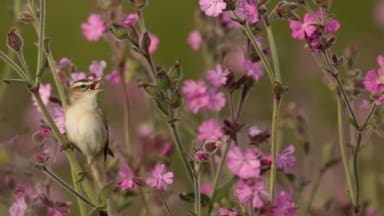
Britain has a wide variety of native species, from large broad oak trees to wispy wildflowers, but the 2023 Plant Atlas Report revealed that over 58% of our plant species are now non-native. The report also stated that 53% of native plants, including common species such as heather, have smaller ranges now than they did in the 1950s, with climate change and agriculture driving the turnover.
Whilst the report paints a worrying picture, conservationist say it’s not too late for British plants. Conservation groups are calling on the government to ensure that planned new farming schemes effectively support threatened species, as well as providing additional protections for biodiverse areas.
On the garden front Dr Ana Attlee, conservation scientist and co-founder of Seedball, the wildflower company on a mission to help increase the abundance of British wildflowers, shares her views as to why it is important to plant native wildflowers in our gardens.
- Wildflowers have evolved alongside native wildlife. The UK’s native flora and fauna has been evolving for millennia, through all the changes in climate, differences in rainfall and all the other challenges in between. Evolving alongside them is native wildlife; the bees, bugs, butterflies, and mammals that depend on the flowers for food, shelter, and sustenance. Some pollinators even depend on these native wildflowers to lay their eggs. This symbiotic relationship means that they play a vital role in supporting our important insects and other wildlife. It’s known that on a single summer day, one acre of wildflower meadow can produce up to 1kg of nectar, that’s enough to support approximately 96,000 honeybees each day, and with the area covered by gardens being bigger than all of our nature reserves combined imagine the impact we could have if every garden in the UK had some native wildflowers.
- Wildflowers store carbon. Native plants, including wildflowers also play a vital role in storing carbon through the process of photosynthesis. During the process, carbon dioxide is absorbed by the plant and transformed into organic matter that is then stored in the soil or used by the wildflowers for growth and reproduction. Both non-native and native wildflowers absorb carbon equally, but native species can be faster growing and more resilient to environmental adjustment. They have adapted to the inconsistent temperatures, water and rainfall changes and nutrient deficient soils, they are super hardy and tough! This means wildflowers can grow in places where other plants might struggle, so if your garden has particularly poor growing conditions, chances are it’ll be ideal for native wildflowers.
- They’re part of our heritage. Literature often depicts the British countryside by the plant life that illustrates it. The pretty primrose cottages, the thistles of Scotland, and Welsh daffodils. Not only are these flowers beautiful, but they also have stories to tell about our history and ancient folklore. With the news that we are losing so much of our native species, with 1 in 6 UK species at risk of extinction, scattering some wildflower seed ball into the garden is a wonderfully simple yet stunning way to help flower populations increase, as well as the wildlife that depends on them and keeps them in our future, as well as our past.

